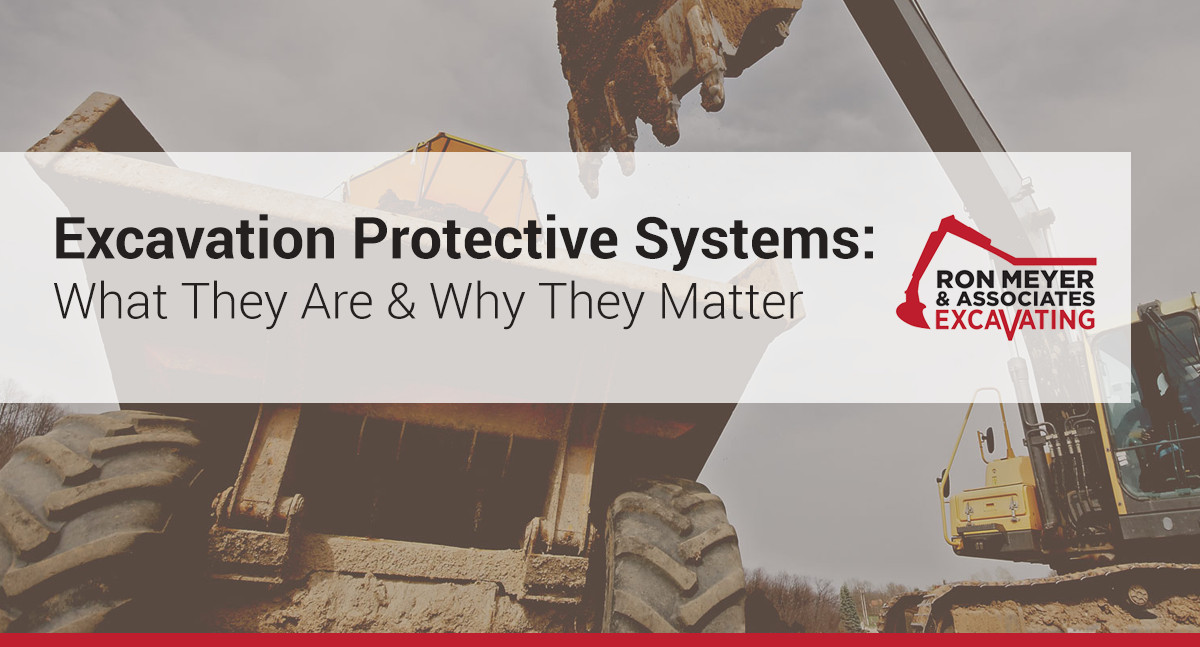
There are many hazards to contend with in the construction industry, but excavations are considered to be among the most potentially dangerous undertakings. Excavations are characterized by any cuts made in the ground, followed by the removal of earth, as in digging a trench or other cavities in the Earth.
In order to properly protect against potential hazards to workers, as well as possible damage to nearby structures or surrounding turf, it’s important to take necessary safety precautions. It is for this reason that excavation protective systems are put into place when excavations occur.
What are the dangers inherent to excavations? What are excavation protective systems and how do they prevent accidents, injuries, and harm? Here’s what you need to know.
Potential Hazards
In order to understand the many potential hazards that could occur when excavating, you first need to understand soil mechanics. Soil is porous and can be affected by moisture, temperature shifts, and general displacement.
The greatest fear with any excavation is a cave-in situation. This can occur in a number of ways, as in when the earth surrounding an excavation site cracks, slides, topples, bulges, heaves, boils (water fills the bottom), or otherwise moves into the excavated hole.
When such shifts in soil begin and collapses occur, workers in or near the excavation site could be buried, struck by falling objects, exposed to hazardous atmosphere, or otherwise harmed. Another potential hazard, of course, is falling into open pits or trenches.
Any or all of these incidents could prove fatal. Whether you’re digging in soil or seemingly stable rock surfaces, it is essential to use proper safety precautions to protect workers.
Excavation Protective Systems
There are a number of different excavation protection systems. Worker safety precautions begin before the first cut is ever made.
First the ground is inspected by a knowledgeable and experienced worker to evaluate the soil type and determine if cave-ins are likely, after which parameters for the cut are calculated. In some cases, engineers will design unique excavation protective systems, but this is generally reserved for large-scale or complex construction projects.
Shied systems are the most common method of excavation protective system utilized, mainly because they are simple and they provide the greatest protection to workers thanks to trench boxes (or other supports) that prevent soil cave-ins. Sloping and benching, by which cuts are made at an angle with a steady slope or with a series of terraced benches, is also fairly common and is one of the safest methods because of greatly reduced risk of collapse, as well as reduced risk of hazardous atmosphere collecting in the bottom of excavations.
Finally, there is timber shoring to consider, but this excavation protective system is generally reserved for projects in cities, where it is used to work around and protect underground utilities (electric, gas, water, phone, etc.), in addition to workers and surrounding areas.
Protecting Workers
The primary goal of any excavation protective system is to protect workers from hazard and harm, although preventing collapse and other hazards may also stop damage to surrounding areas and structures. It is imperative to put proper protections in place to meet OSHA standards, prevent accidents, and ensure worker safety.
At Ron Meyer & Associate Excavating, Inc, we’ve been providing underground and commercial construction to private and commercial businesses for 39 years. As the general contractor or subcontractor, our experienced foremen, equipment operators, pipe layers, truck drivers and well-maintained equipment fleet make us an undeniable choice for your excavating services. Let’s talk about your project!

As 45 years of experience as an underground/site contactor and a third generation contractor, Ron takes time to go through each individual project with the supervisor and is responsible for all scheduling and equipment logistics. He’s also involved in all troubleshooting for projects.